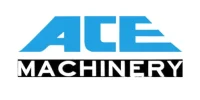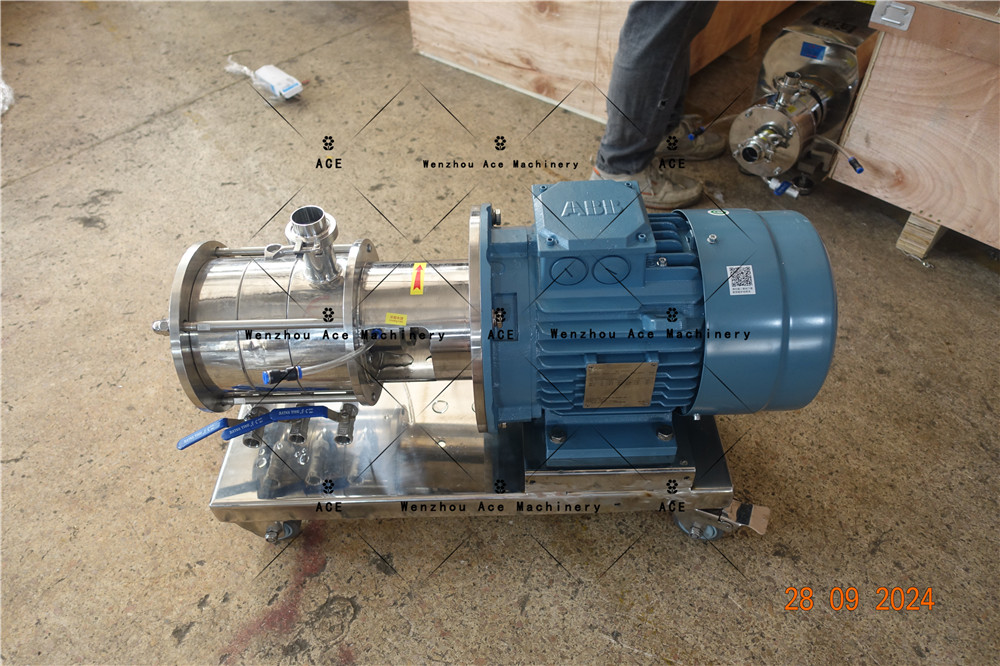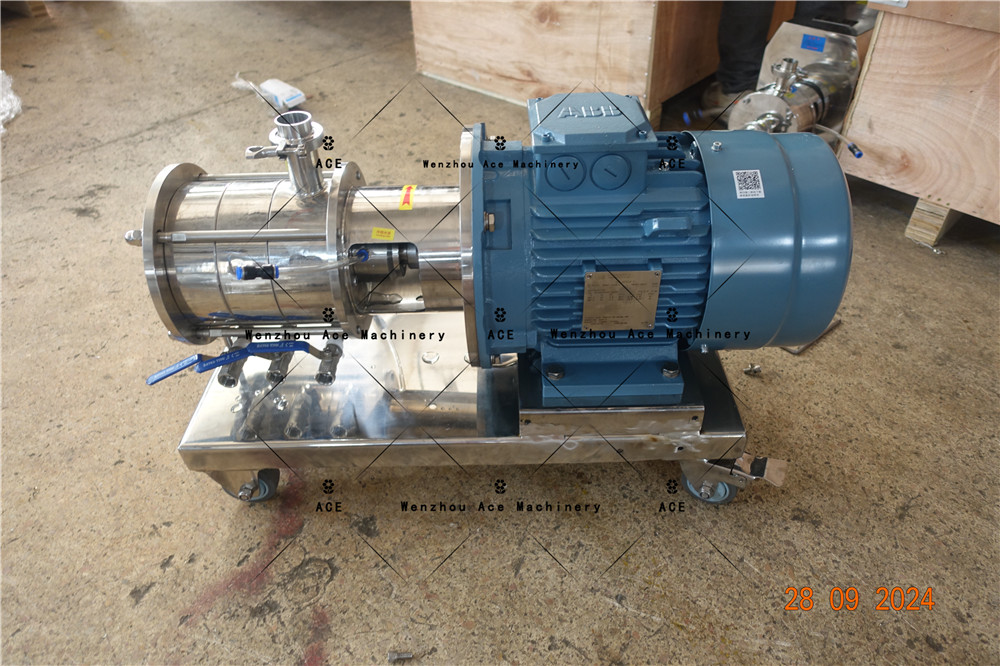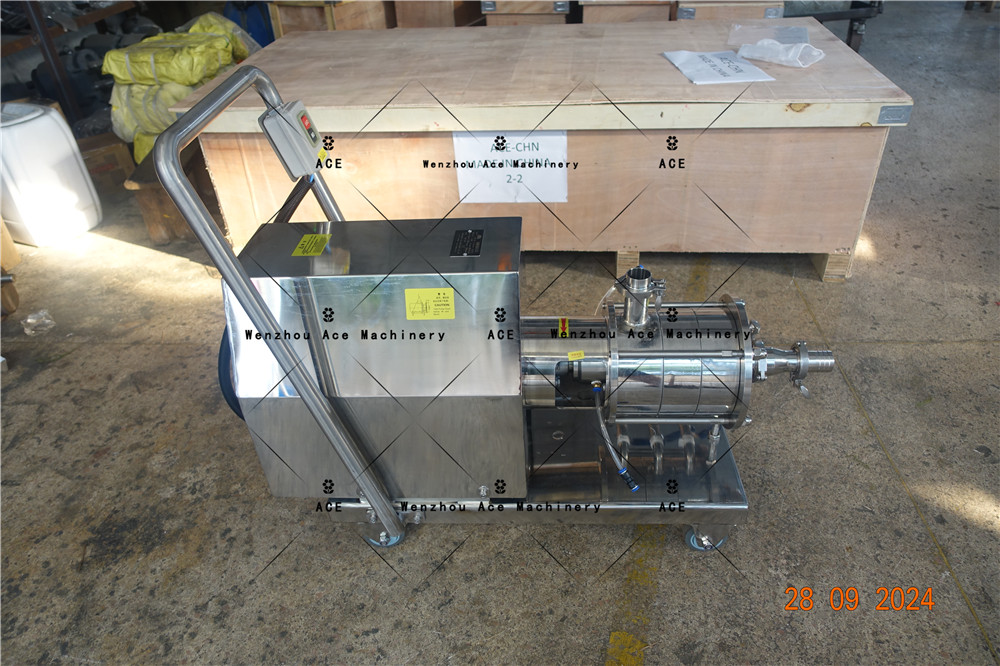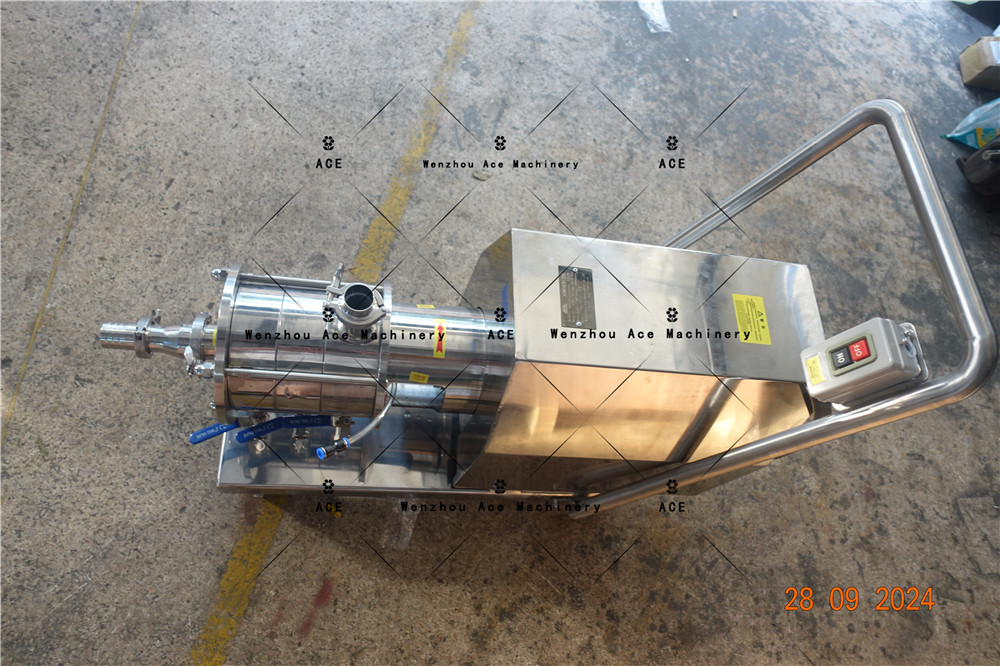Key Features
High Efficiency for Mixing the Emulsions
The design of the rotor stator permits large shear forces to be generated in the inline mixer, which increases the dispersion of the constituents and the deagglomeration of the particles to smaller sizes to accomplish this process. This procedure results in a uniform mixture that leads to quality and stability of the final product.
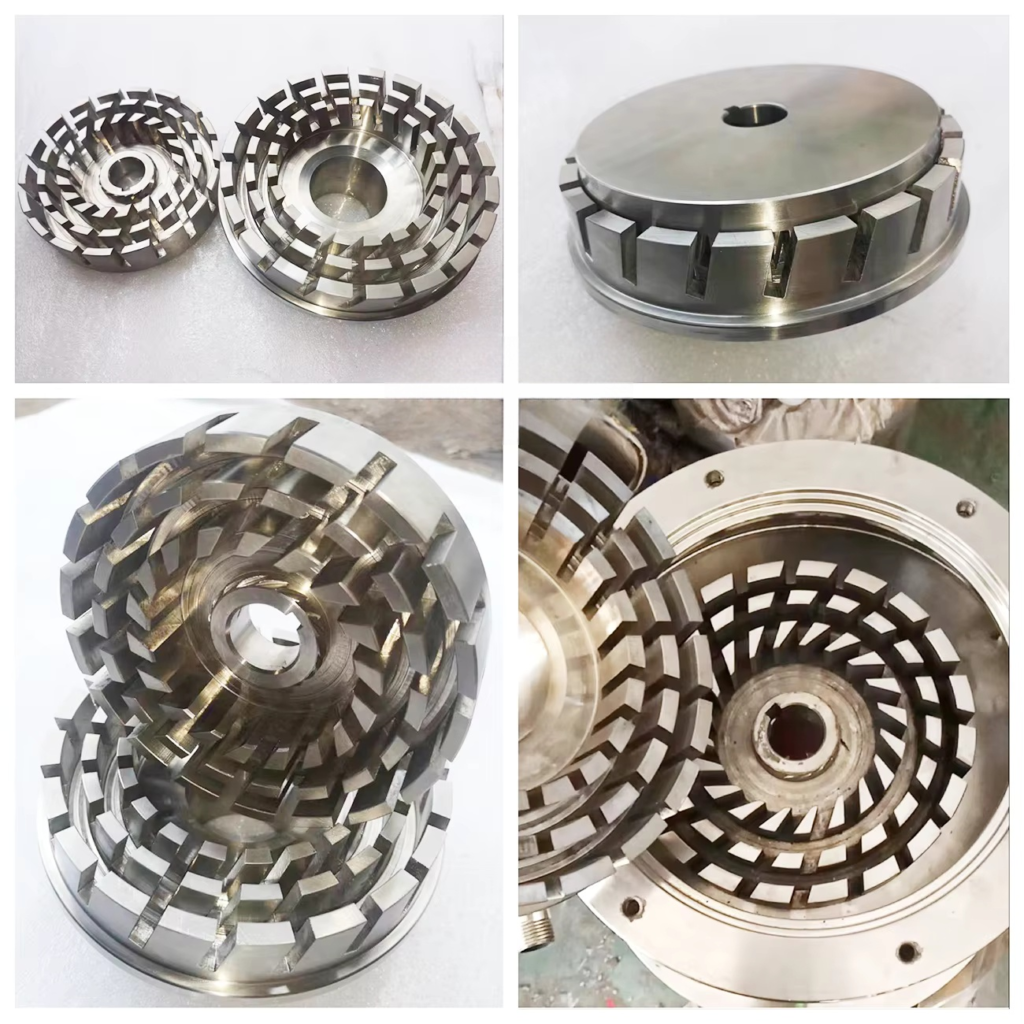
Compact and Inline Design
Among the unique characteristics of the inline homogenizer pump is that it comes in a compact inline design. This permits easy addition to the current pipeline without increasing any additional space for the horizontal movement of apparatus on the floor. It also helps in reducing product wastage through waste reduction since there is no need for processing in batches as there will be no one-time pausing of the process.
Variable Speed Control
By altering the speed when operating the homogenizer, it is possible to operate and energize the homogenization of high-viscosity products so that special requirements for homogenization are achieved. The wide range of products handled by the pump implies that it is flexible for use in different industries, which can be either high shear or shear sensitive.
Durable Construction
Because the inline homogenizer pump is made from industrial-grade materials like stainless steel (common SS304 or SS316), it does not corrode or suffer wear and tear, thus assuring longevity in harsh operations. The sturdy construction of the pump also helps in supporting high pressures and temperatures during brief stops in production cycles or extended production runs.
Hygienic Design
In industries such as food, beverage, and pharmaceuticals, sanitation aspects are the most crucial. Features such as CIP (Clean-In-Place), when incorporated into the pump construction, allow for proper cleaning of any residues and thus eliminate contamination of the product. These internal components also have a smooth finish that facilitates hygiene maintenance and prevents unnecessary accumulation of material.
Materials
The inline homogenizer pump is fabricated using premium quality grades of materials to ensure that it remains reusable and safe.
Stainless Steel
Most of the pump body and internal components are made from food-grade austenite stainless steel SS304, SS316, which is extensively known for being non-corrosive and easy to maintain.
Seals and Gaskets
These seals are usually made out of FDA segment elastomers (EPDM, FKM, PTFE), which are suitable for a variety of applications in varying temperatures and chemical environments.
Rotor and Stator
These critical components are precision machined for tight controls in tolerance, all in a bid to ensure that they apply shear during operation uniformly.
Applications
The inline homogenizer pump has a wide range of applications and is quite effective in several industries:
Food and Beverage
It’s very effective in separating and emulsifying sauces, dairy products, beverages, and purees, all of which are critical to end consumer satisfaction.
Pharmaceuticals
Accurate blending is important, especially in the synthesis of stable and homogenous suspensions, creams, and ointments. The active ingredient is dispensed evenly, which ensures that the pharmaceutical products are both effective and safe.
Cosmetics
The same applies to cosmetic products such as lotions, creams, and serums. The use of an inline homogenizer pump creates smooth and rich textures by reducing the particle size of the oils and water emulsions.
Chemical Processing
In chemical industries, the pump is used to incorporate solid particles into liquids while forming stable emulsions, which are important in products such as paints, coatings, and cleansers.
Customization Options
As the inline homogenizer pump is designed to cater to different industries, certain customization features come with the pump.
Material Upgrades
In certain cases, the pump head can be made from even more corrosive-resistant materials such as Hastelloy alloys or duplex stainless steel for demanding applications.
Seal Types
Based on the nature of the product being handled, it is possible to mount mechanical seals of different sorts on the pump, including single or double mechanical seals for the handling of aggressive chemicals or high-pressure operations.
Motor Options
VFDs can fit many pumps, enabling motor speed to be controlled for targeted process completion even where other methods are not available.
Integration with Control Systems
The inline homogenizer pump, used in automated production lines, can be attached to existing PC systems for context monitoring and real-time control when necessary.
Common Issues and Solutions
Although the inline homogenizer pump is built ruggedly, operating concerns may still be experienced by users. Below are some of these issues and their remedies.
Cavitation
This occurs when the speed of the pump is excessive, causing the fluid to vaporize and air pockets to reduce the efficiency of the pump. To avoid cavitation, it’s recommended that users follow the specified pump speed while ensuring the pump is properly primed before use.
Wear and Tear
Over time, the rotor and stator wear out, especially when processing abrasive materials. Performance can be maintained by adhering to a scheduled maintenance plan and timely replacement of effective parts.
Leakage
If the seals cannot contain the pressure, leakage can occur, especially in high-pressure applications. This issue can be resolved by regularly inspecting seals and replacing them when necessary.
Overheating
Excessive workload applied to the pump can result in motor overheating. Installing cooling systems and providing proper support for the pump can help prevent this issue.
Inline Homogenizer Pump Model
| Model | Power (KW) | Flow (T/h) | Speed (rpm) | Inlet Φ | Outlet Φ |
|---|---|---|---|---|---|
| TRL3-80 | 4 | 0-1.5 | 2900 | 38 | 32 |
| TRL3-100 | 5.5 | 0-3 | 2900 | 51 | 38 |
| TRL3-120 | 7.5 | 0-4 | 2900 | 51 | 38 |
| TRL3-140 | 11 | 0-5 | 2900 | 63.5 | 51 |
| TRL3-165 | 18.5 | 0-8 | 2900 | 63.5 | 51 |
| TRL3-180 | 22 | 0-12 | 2900 | 63.5 | 63.5 |
| TRL3-185 | 30 | 0-18 | 2900 | 76.2 | 63.5 |
| TRL3-200 | 45 | 0-25 | 2900 | 76.2 | 63.5 |
| TRL3-210 | 55 | 0-35 | 2900 | 89 | 76.2 |
| TRL3-230 | 75 | 0-50 | 2900 | 102 | 89 |
| TRL3-245 | 90 | 0-75 | 2900 | 102 | 102 |
| TRL3-260 | 110 | 0-90 | 2900 | 127 | 102 |
| TRL3-275 | 132 | 0-110 | 2900 | 127 | 102 |
| TRL3-280 | 160 | 0-130 | 2900 | 127 | 102 |
Why Choose Our Inline Homogenizer Pump?
The inline homogenizer pump offers a safe, easy, and reliable solution for all your mixing and homogenization needs. Its rugged design, sanitary construction, and customization options make it the best solution for improving product quality and production efficiency. Whether you are in the food and beverage, pharmaceutical, cosmetics, or chemical industries, this pump is designed to meet your specific needs.
Invest in the inline homogenizer pump today and enhance your production line’s efficiency. Contact us now to learn how this pump can revolutionize your processes and request a quote tailored to your needs!
